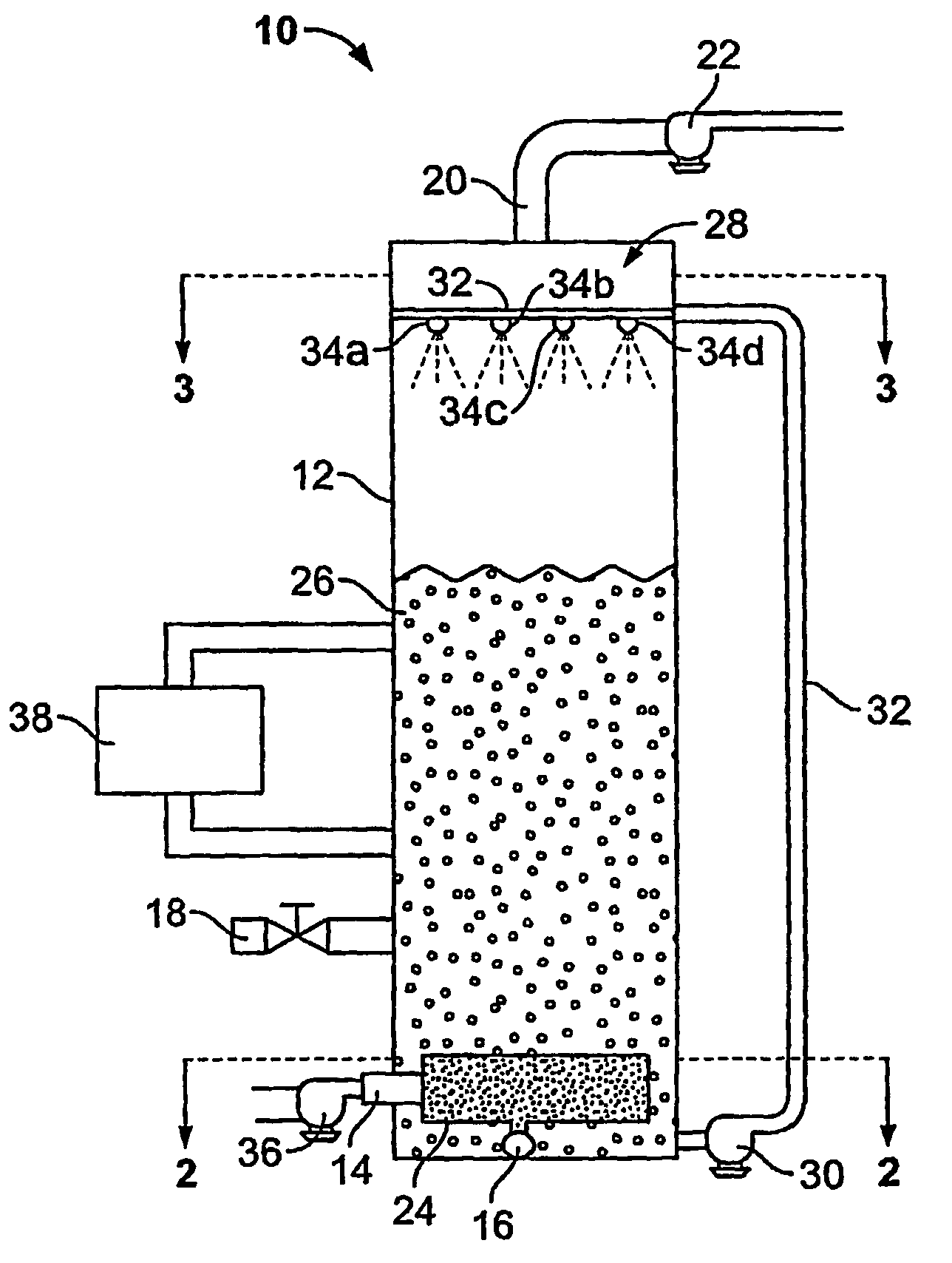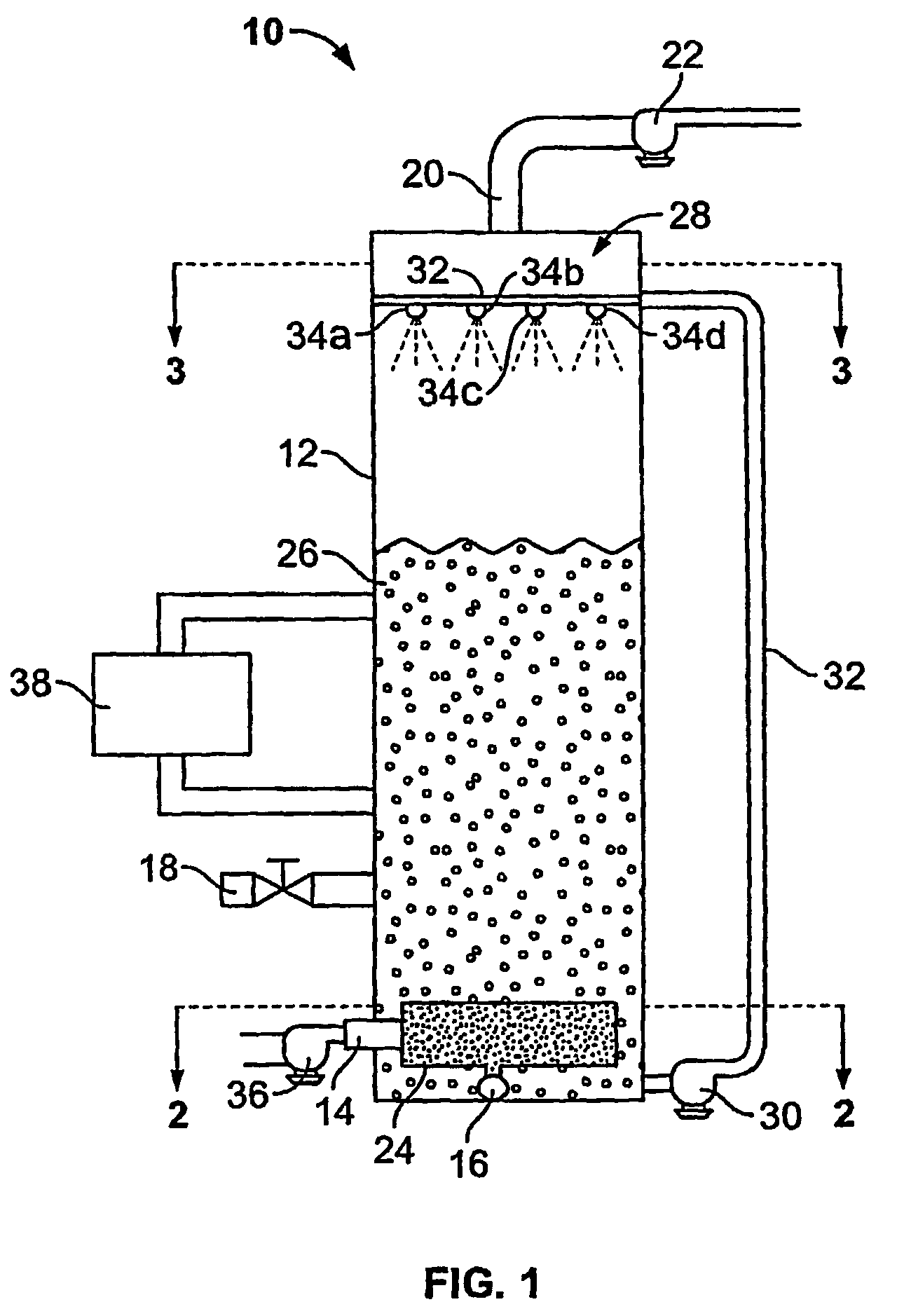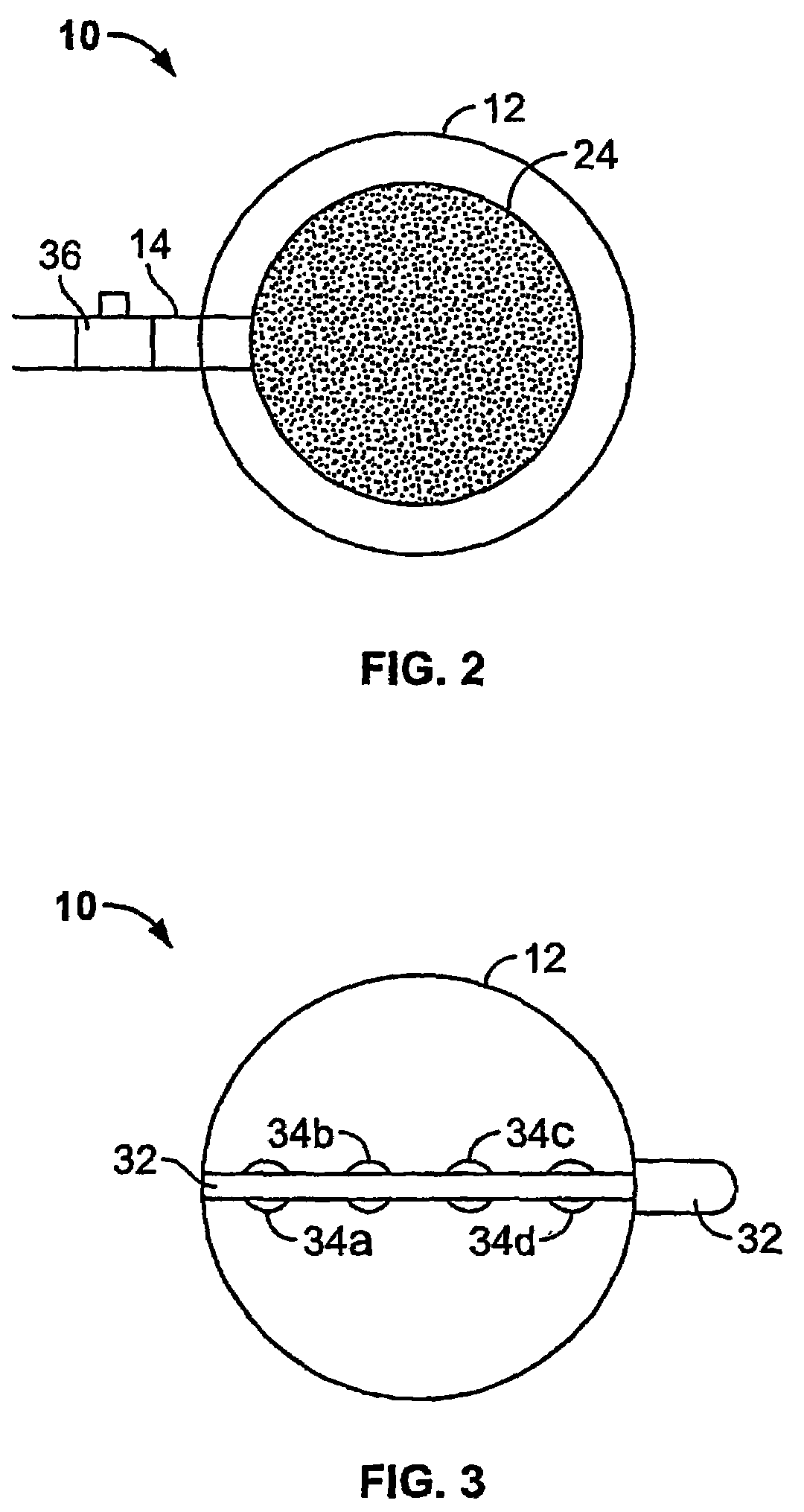Device for removing particulate, various acids, and other contaminants from industrial gases
a technology of industrial gases and devices, applied in separation processes, auxillary pretreatment, filtration separation, etc., can solve the problems of increasing cancer risk, negative effects on surrounding vegetation, and health related issues, and achieve the effect of reducing the emission of nitrous oxides and reducing the final exhaust gas volum
- Summary
- Abstract
- Description
- Claims
- Application Information
AI Technical Summary
Benefits of technology
Problems solved by technology
Method used
Image
Examples
Embodiment Construction
[0022]FIG. 1 illustrates a side elevation view of a columnar vessel 10 configured to reduce or remove the presence of contaminants in production source exhaust gases in accordance with the illustrated embodiment of the present invention. The columnar vessel 10 includes a tank 12, an inlet port 14, an exhaust port 20, a diffuser 24, solution 26, and a mist assembly 28. The number and the size of columnar vessels 10 required may be determined by the particular needs of the associated production source(s).
[0023]The tank 12 includes an interior portion, a lower end, and an upper end. As shown in FIG. 1, the tank 12 may be vertical and may be constructed from a variety of materials, including metallic materials or materials that offer some resistance to acidic or caustic corrosion, such as fiberglass or plastic. The tank 12 may be sized to accommodate the throughput of exhaust gas from the production source at a flow rate which provides adequate retention time of the exhaust gas in the s...
PUM
| Property | Measurement | Unit |
|---|---|---|
| diameter | aaaaa | aaaaa |
| volume | aaaaa | aaaaa |
| height | aaaaa | aaaaa |
Abstract
Description
Claims
Application Information
 Login to View More
Login to View More - R&D
- Intellectual Property
- Life Sciences
- Materials
- Tech Scout
- Unparalleled Data Quality
- Higher Quality Content
- 60% Fewer Hallucinations
Browse by: Latest US Patents, China's latest patents, Technical Efficacy Thesaurus, Application Domain, Technology Topic, Popular Technical Reports.
© 2025 PatSnap. All rights reserved.Legal|Privacy policy|Modern Slavery Act Transparency Statement|Sitemap|About US| Contact US: help@patsnap.com



